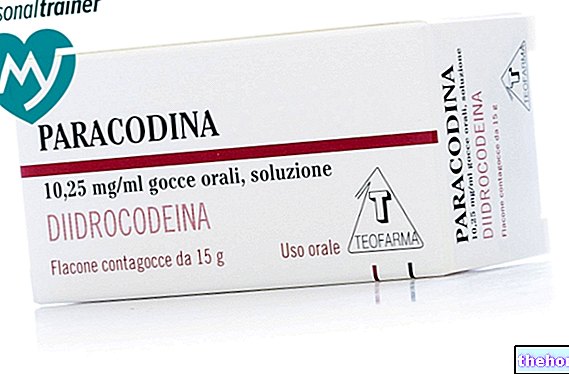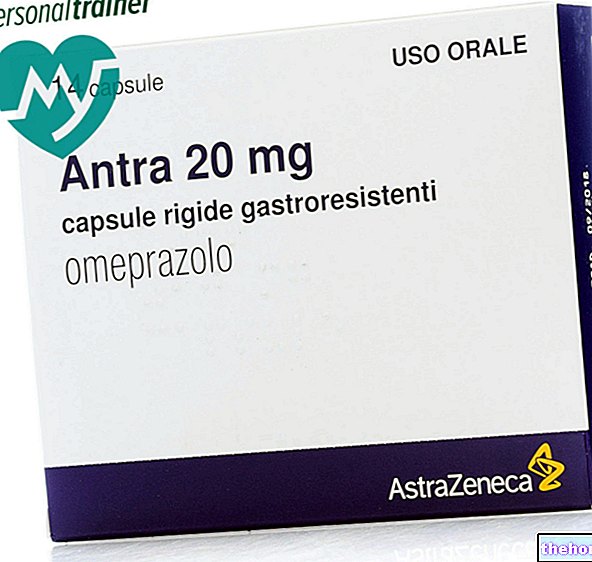Active ingredients: Iron (Ferrous Sulphate), Ascorbic Acid
FERRO-GRAD® C 105 mg + 500 mg prolonged release tablets
Why is Ferro Grad C used? What is it for?
PHARMACO-THERAPEUTIC CATEGORY:
Anemic drug.
INDICATIONS:
For the martial therapy of iron deficiency anemia. In anemia due to acute or chronic blood loss, deficient iron intake or absorption, increased iron requirements (growth, pregnancy). In anemia due to infectious diseases.
Contraindications When Ferro Grad C should not be used
Hypersensitivity already known to the components. Hemochromatosis. Hemosiderosis. Hemolytic anemia.
FERRO-GRAD C is contraindicated in the presence of intestinal diverticula or in the presence of any other intestinal obstruction. Iron is contraindicated in patients who repeatedly receive blood transfusions.
Oral iron preparations are contraindicated in conjunction with parenteral iron therapy.
Precautions for use What you need to know before taking Ferro Grad C
As with other oral iron preparations, Ferro-Grad C should be kept out of the reach of children to avoid accidental iron poisoning.
Black discolouration of stool can interfere with laboratory tests used to detect blood in stool.
Occasionally the guaiac resin test has given false positives for the blood.
Avoid taking oral iron preparations 1 hour before or 2 hours after taking antacids.
Avoid oral intake of iron-based preparations concomitantly or in the 2 hours following the intake of quinolones.
Interactions Which drugs or foods can modify the effect of Iron Grad C
Like all iron-based preparations, Ferro-Grad C also inhibits the absorption of tetracyclines from the gastrointestinal tract and tetracyclines inhibit the absorption of iron.
If both therapies are to be taken, the tetracyclines should be administered 2 hours before or 3 hours after taking the iron preparation.
Iron can reduce the gastrointestinal absorption of penicillamines. If both therapies are to be taken, penicillamines should be administered at least 2 hours before or 2 hours after taking the iron preparation.
Chloramphenicol can delay the response of iron therapy. Concomitant administration of antacids and oral iron preparations may reduce iron absorption.
The concomitant administration of oral iron preparations may interfere with the absorption of some oral quinolones such as ciprofloxacin, norfloxacin and ofloxacin as results from the decreased concentration of quinolones in serum and urine. It may also decrease the absorption of methyldopa. and, in subjects with primary hypothyroidism, that of thyroxine.
Ascorbic acid can enhance the absorption of iron from the gastrointestinal tract.
Warnings It is important to know that:
The use of iron preparations is recommended by the international literature during pregnancy and lactation. No effect is reported in the literature on attention and ability to drive or use machines. This medicine contains E124, which may cause allergic reactions.
Dosage and method of use How to use Iron Grad C: Dosage
Adults and children over 10 years: 1 tablet per day to be swallowed without chewing, on an empty stomach or before the main meal.
Overdose What to do if you have taken too much Iron Grad C
Signs of severe toxicity may be delayed as the iron is in a controlled release form. In acute iron intoxication, increased capillary permeability, plasma hypovolemia, increased cardiac output and sudden cardiovascular collapse may occur. In the event of overdosing, efforts should be made to hasten the elimination of swallowed Gradumet tablets.
An emetic should be administered as soon as possible followed, if appropriate, by gastric lavage.
Immediately after vomiting, a strong dose of saline purgative should be administered in order to accelerate the passage of the drug into the intestinal tract.
Subsequently, a radiological examination can be considered to ascertain the position and number of Gradumet tablets that have remained in the gastro-intestinal tract.
Side Effects What are the side effects of Iron Grad C
The likelihood of gastric intolerance to iron in the controlled-release Gradumet vehicle is low. If this occurs, the tablet can be taken after a meal. In addition, the following adverse events were observed with low incidence: diarrhea, constipation, nausea, vomiting, abdominal pain or discomfort, black discolouration of stools and, in some isolated cases, allergic reactions ranging from rash to "have been reported. anaphylaxis. Ascorbic acid is generally well tolerated; large amounts of ascorbic acid are indicated to cause diarrhea and other intestinal disorders and have also been associated with the formation of kidney stones.
Expiry and Retention
STORAGE:
Keep this medicine out of the reach and sight of children. Store at a temperature not exceeding 25 ° C.
EXPIRATION:
See the expiry date printed on the package. This date refers to the product in intact packaging, properly stored.
ATTENTION:
Do not use the medicine after the expiry date indicated on the package
COMPOSITION:
Each tablet contains: Active Ingredients: Dried ferrous sulphate 329.7 mg (equal to 105 mg of Fe + 2); Granulated ascorbic acid 90% (equal to 500 mg of ascorbic acid) 555.56 mg.Excipients: Core: Methylacrylate-methylmethacrylate, Magnesium Stearate, Povidone, Polyethylene glycol 8000, microcrystalline cellulose; Coating: Ethylcellulose, Talc, Polyethylene glycol 400, Hydroxypropylmethylcellulose, E-124, Titanium dioxide, Polyethylene glycol 8000.
PHARMACEUTICAL FORM AND CONTENT:
Blister packs of 30 prolonged-release tablets (Gradumet).
Source Package Leaflet: AIFA (Italian Medicines Agency). Content published in January 2016. The information present may not be up-to-date.
To have access to the most up-to-date version, it is advisable to access the AIFA (Italian Medicines Agency) website. Disclaimer and useful information.
01.0 NAME OF THE MEDICINAL PRODUCT
IRON-GRAD C
02.0 QUALITATIVE AND QUANTITATIVE COMPOSITION
Each tablet contains:
Active principles
Dried ferrous sulphate (equal to 105 mg of
elemental iron) 329.7 mg
Granulated ascorbic acid 90% (equal to 500 mg of
ascorbic acid) 555.56 mg
03.0 PHARMACEUTICAL FORM
Prolonged-release tablets
04.0 CLINICAL INFORMATION
04.1 Therapeutic indications
For the martial therapy of iron deficiency anemia. In anemia due to acute or chronic blood loss, deficient iron intake or absorption, increased iron requirements (growth, pregnancy). In anemia due to infectious diseases.
04.2 Posology and method of administration
Adults and children over 10 years: 1 tablet per day to be swallowed without chewing, on an empty stomach or before the main meal.
04.3 Contraindications
Hypersensitivity already known to the components. Hemochromatosis. Hemosiderosis. Hemolytic anemia.
Ferro-Grad C is contraindicated in the presence of intestinal diverticula or in the presence of any other intestinal obstruction.
Iron is contraindicated in patients who repeatedly receive blood transfusions.
Oral iron preparations are contraindicated in conjunction with parenteral iron therapy.
04.4 Special warnings and appropriate precautions for use
As with other oral iron preparations, Ferro-Grad C should be kept out of the reach of children to avoid accidental iron poisoning.
Black discolouration of stool can interfere with laboratory tests used to detect blood in stool.
Occasionally the guaiac resin test has given false positives for the blood.
Avoid taking oral iron preparations 1 hour before or 2 hours after taking antacids.
Avoid oral intake of iron-based preparations concomitantly or in the 2 hours following the intake of quinolones.
Ferro-Grad C contains E124 which can cause allergic reactions.
04.5 Interactions with other medicinal products and other forms of interaction
Like all iron preparations, Iron-Grad C also inhibits the absorption of tetracyclines from the gastrointestinal tract and tetracyclines inhibit the absorption of iron. If both therapies are to be taken, the tetracyclines must be administered 2 hours before or 3 hours after taking the iron-based preparation.
Iron can reduce the gastrointestinal absorption of penicylamines. If both therapies are to be taken, penicylamines should be administered at least 2 hours before or 2 hours after taking the iron preparation.
Chloramphenicol can delay the response of iron therapy.
Concomitant administration of antacids and oral iron preparations may reduce iron absorption.
Concomitant administration of iron preparations may interfere with the absorption of some oral quinolones such as ciprofloxacin, norfloxacin and ofloxacin as results from the decreased concentration of quinolones in serum and urine.
In addition, the absorption of methyldopa and, in subjects with primary hypothyroidism, that of thyroxine may decrease.
Ascorbic acid can enhance the absorption of iron from the gastrointestinal tract.
04.6 Pregnancy and lactation
The use of iron preparations is recommended by the international literature during pregnancy and lactation.
04.7 Effects on ability to drive and use machines
No effect is reported in the literature on attention and ability to drive or use machines.
04.8 Undesirable effects
The likelihood of gastric intolerance to iron in the controlled-release Gradumet vehicle is low. If this occurs, the tablet can be taken after a meal. The following adverse events have also been observed with low incidence: diarrhea, constipation, nausea, vomiting, abdominal pain or discomfort, black discolouration of the stool and in some isolated cases allergic reactions ranging from rash to anaphylaxis have been reported. "ascorbic acid is generally well tolerated; large amounts of ascorbic acid are indicated to cause diarrhea and other intestinal disorders and have also been associated with the formation of kidney stones.
04.9 Overdose
Signs of severe toxicity may be delayed as the iron is in a controlled release form. In acute iron intoxication, increased capillary permeability, plasma hypovolemia, increased cardiac output and sudden cardiovascular collapse may occur. In the case of overdosing, it is necessary to try to hasten the elimination of ingested Gradumet tablets. An emetic should be administered as soon as possible, followed, if appropriate, by gastric lavage. Immediately after vomiting, a strong dose of saline purgative should be administered in order to accelerate the passage of the drug into the intestinal system.
Subsequently, a radiological examination can be considered to ascertain the position and number of Gradumet tablets that are left in the gastrointestinal tract.
05.0 PHARMACOLOGICAL PROPERTIES
05.1 Pharmacodynamic properties
The absorption of iron occurs in the stomach and in the first duodenal portion, and it is inversely proportional to the degree of saturation of the body's martial stores. Essential for the purpose of absorption is that iron is present as divalent iron. Today we tend to explain the regulation of elemental iron absorption in relation to the saturation of plasma transferrin and therefore in direct relationship with the saturation of iron deposits.
The iron in excess of the needs of hemoglobin, myoglobin and other cellular functions is stored as ferritin and hemosiderin especially in the parenchymal cells of the liver and spleen.
The average daily excretion of iron in normal physiological conditions is 0.5-1 mg. In women, the menstrual cycle involves a further excretion of about 0.3-1.0 mg per day.
The oral dose of 1 g of elemental iron is considered toxic and requires appropriate treatment.
Ascorbic acid is easily absorbed from the intestinal tract and widely distributed throughout the body; in the various tissues the concentration is almost parallel to the metabolic activity of the tissue itself. There is a renal threshold for vitamin C: it is excreted by the kidney in large quantities only when the plasma level of ascorbic acid exceeds this threshold which is around 1.4 mg%.
The reducing activity of vitamin C is due to its ability to transform into dehydroascorbic acid, preventing the formation of the poorly absorbable ferrous salt. In fact, the increase in the absorption of ferrous sulphate is more than 30% higher when it is administered with vitamin C Finally, vitamin C seems to be able to accelerate the formation of hemoglobin by catalyzing the enzymatic incorporation of iron into the heme.
Ferro-Grad is an Abbott preparation that allows an "effective martial therapy by mouth, sparing the patient the troubles that sometimes characterize the oral administration of iron.
Each Ferro-Grad C tablet contains 329.7 mg of dried ferrous sulphate (equivalent to 105 mg of elemental iron) and 500 mg of ascorbic acid (in the form of sodium ascorbate).
The association of high doses of vitamin C with ferrous sulphate allows an increase in the absorption of iron by virtue of the reducing power of ascorbic acid.
The Gradumet tablet consists of a porous and inert resin matrix impregnated with iron salt and a layer of vitamin C.
The time of release of the two drugs is controlled.
Vitamin C is released in the stomach while most of the iron is released as the tablet passes through the duodenum and upper small intestine.
The resinous matrix, emptied of its content, is not absorbed and is eliminated with the faeces.
Acute toxicity: rat Wistar strain for oral administration LD50 mg 1119 (981-1275)
for Fe SO4
LD50 mg> 5000 / Kg for ascorbic acid.
Prolonged administration toxicity.
Rat: Os 326 mg for 20 days.
The ferrous sulphate is contained in the interstitial spaces of the matrix, and is released after about an "hour" from the ingestion of the tablet, by means of a simple osmolar mechanism. The ferrous ion then follows the metabolic fate common to dietary iron.
05.2 Pharmacokinetic properties
05.3 Preclinical safety data
06.0 PHARMACEUTICAL INFORMATION
06.1 Excipients
Core: Methylacrylate-methylmethacrylate, Magnesium Stearate, Povidone, Polyethylene glycol 8000, Microcrystalline cellulose; Coating: Ethylcellulose, Talc, Polyethylene glycol 400, Hydroxypropylmethylcellulose, E-124, Titanium dioxide, Polyethylene glycol 8000.
06.2 Incompatibility
Like all iron-based products, also FERRO-GRAD C is incompatible with penicylamines due to the risk of increased toxicity of the latter.
06.3 Period of validity
The stability of the product is equal to 36 months.
06.4 Special precautions for storage
Store at a temperature not exceeding 25 ° C
06.5 Nature of the immediate packaging and contents of the package
Blister of 30 tablets
06.6 Instructions for use and handling
07.0 MARKETING AUTHORIZATION HOLDER
Teofarma S.r.l. - Via F.lli Cervi, 8 - 27010 Valle Salimbene (PV)
08.0 MARKETING AUTHORIZATION NUMBER
022657023 "105 mg + 500 mg prolonged-release tablets" 30 tablets
09.0 DATE OF FIRST AUTHORIZATION OR RENEWAL OF THE AUTHORIZATION
Ferro-Grad C 11/10/1973
10.0 DATE OF REVISION OF THE TEXT
February 2009




























